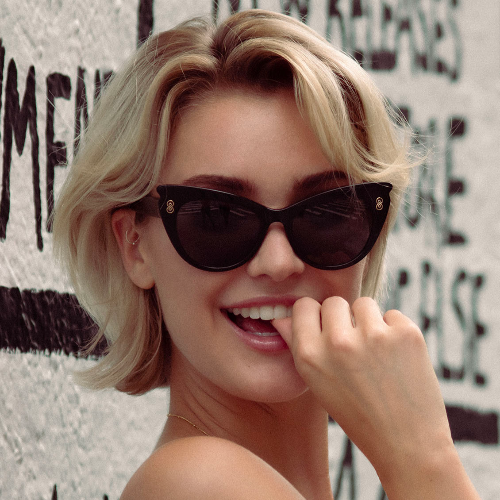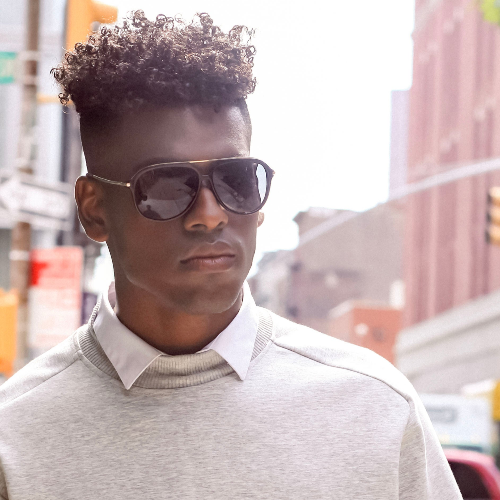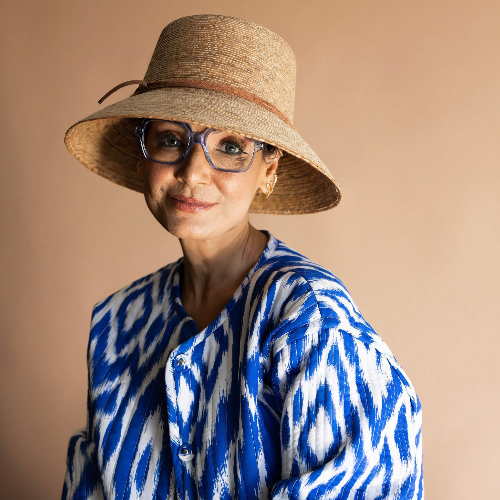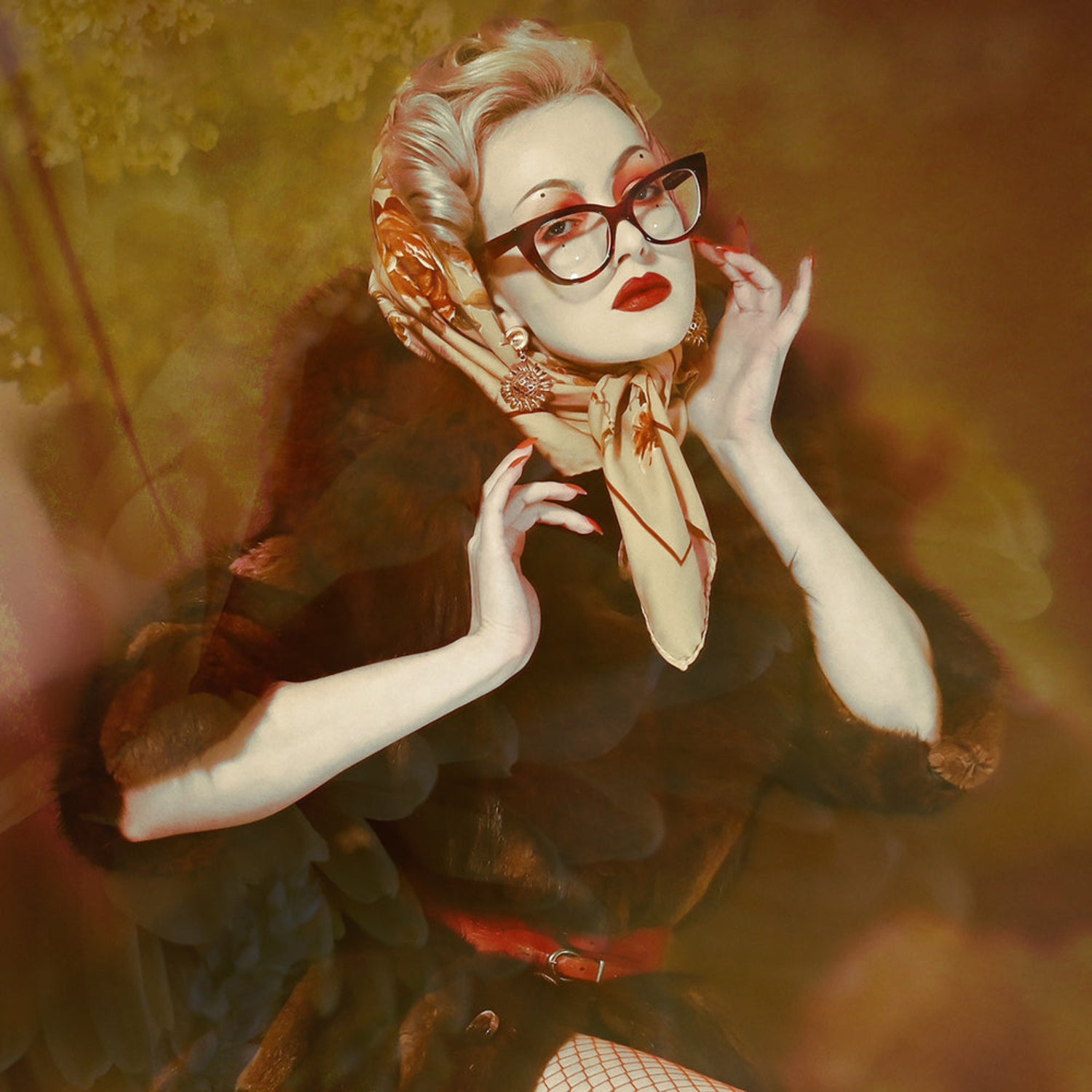
What are Acetate Glasses? Aesthetics, Materials, and Care: Your Complete Guide
Acetate glasses have been around for decades, dating back to the 1950s. Made in rich colors, this timeless material strikes a balance between form and function. Whether a cat eye or classic tortoiseshell, acetate frames have kept up with trends remaining popular to this day.
Understanding acetate, its uses, and how to care for it can help you choose frames that work double duty being as stylish as they are durable. We'll unpack the value of acetate in frame design, show you how to select frames, highlight famous frames across the decades, and provide guidance on how to care for your acetate glasses in this guide.
What are Acetate Glasses?
Acetate or cellulose acetate is a plant-based plastic made from organic sources like cotton and wood pulp. It is not a petroleum-based plastic, making it more sustainable, lightweight, hypoallergenic, and an ideal frame for those conscious of their carbon footprint. Acetate glasses are not only a favorite of buyers looking for hypoallergenic and sustainable eyewear options, designers also prefer them.
Acetate frames offer a number of benefits. First, they are durable, stronger, and more flexible than synthetic plastic. Due to its chemical composition, they also allow for very rich and deep hues, patterns, and translucent tones, another bonus for designers. For wearers, they are a very comfortable fit and are lightweight and easily adjustable. Additionally, synthetic plastic frames can look mass-produced, whereas acetate has a high-end vintage aesthetic.
Acetate Glasses vs. Plastic Glasses
Acetate sunglasses are made from high-quality, plant-based plastic derived chiefly from cotton or wood, whereas plastic refers to injection-molded materials like polycarbonate or nylon. While plastic is budget-conscious, lightweight, and inexpensive, they are less durable over time and prone to cracking or warping. Plastic colors are also painted or coated, which can fade or chip over time. Acetate glasses are layered, cut, and polished, which results in a more durable product that is less prone to warping and wear. Because of their flexibility and strength, they are often preferred by designers.
Acetate Glasses Trends: Decade-by-Decade
Acetate is a surprisingly old and organic frame material. Appearing in the 1950s, Acetate took off, being the material of choice for the cat-eye shape. Precisely because they can hold new and interesting shapes, they are a favorite of designers. Below is our quick recap of acetate trends over time.
1950s Cat-Eye Glasses & Classic Tones
In the 1950s, acetate started appearing as a material that denoted femininity and glamour in black, ivory, tortoiseshell, and soft blush with cat eye and browline frames. Another advantage of acetate is its ability to hold embellishments, including metallic inlays and pavé crystals. Celebrities and everyday consumers embraced these shapes and acetate frames.
1960s Mod and Minimal Glasses
Think Austin Powers and the space-aged and bright designs that typify the 1960s, which used the acetate material for eyewear. Mod-style eyewear, oversized round glasses, and Lennon-style frames with keyhole bridges were popular. We saw designers use white, clear, two-tone, and black and white combos.
1970s Oversized and Earthy Glasses
With the dawn of the 1970s, the acetate frame remained a must-have. However, they took a very dramatic size overhaul with squares and aviators, over the round frames of the 1960s. Oversized acetate frames were a must-have accessory for both men and women in earth tones, including amber, honey, tortoiseshell, and deeper brown. Lenses also included gradient styles, which reappeared over the years.
1980s Bold and Beautiful Glasses
The 80s were bold, and many made statements with thick rimmed rectangles, exaggerated round frames, and in neon colors like cherry red, cobalt blue, and in stripes. Acetate frames allow for bold design and big colors in all types of shapes.
1990s Minimalist Revival Glasses
Grunge and minimalism adopted some older styles and toned down frames from the obtuseness of the 1980s, and called back clean lines and more retro styles. Some popular styles included wire-acetate hybrids, small ovals, and cat-eye retro frames. New subdued colors include smoky gray and matte black.
Vintage Meets Modern: 2000s Glasses and Beyond
Acetate glasses, like other fashion, come full circle. Both the 2000s and current styles blend retro patterns and shapes with modern sustainability and comfort. Transparent hues to recycled tortoise blends, in ethically sourced material, with anti-glare lenses, are modern updates that we see in modern acetate eyewear.
Our top styles at Vint & York include cat eyes from the 1950s, round Lennon from the 1960s, oversized square frames from the 1970s, and classic Wayfarers from the 1980s.
Caring for Acetate Frames
Acetate frames are incredibly durable, but should be properly maintained for long wear. First, we recommend using a microfiber cloth for daily cleaning. Be sure to store glasses in the appropriate-sized case. Since they are made of sustainable materials, they are subject to warping and can be damaged by cleaning agents and heat. Do not leave them in hot cars or in situations where they may be overheated, and only clean them with mild soap and water.
2025 Top Trends for Acetate Frames
2025 and 2024 are arguably all about acetate. Eyewear fashion icons include Charli XCX, Hailey Bieber, and many others who wear almost exclusively acetate frames, and in the case of the former, rarely remove them. Two trends that will continue to lead the charge for celebrities and consumers are oversized geometric acetate frames and pastel and translucent frames.
Geometric frames feature sharp angles and thick rims, giving a dramatic and structured look. YSL launched a sunglasses frame that is dominating the streets this Spring. The trend also includes angular squares to rounded designs, with thicker temples and sculpted edges. Pastel and translucent frames are softer and perfect for spring and summer. Some colors we see are lavender, mint green, and baby blue, recalling some of the baby style hues of the 1990s. However, you choose, soft or structured, an acetate frame is a timeless choice for all generations.
Find your new favorite pair of acetate glasses here at Vint & York.









Leave a comment
This site is protected by hCaptcha and the hCaptcha Privacy Policy and Terms of Service apply.